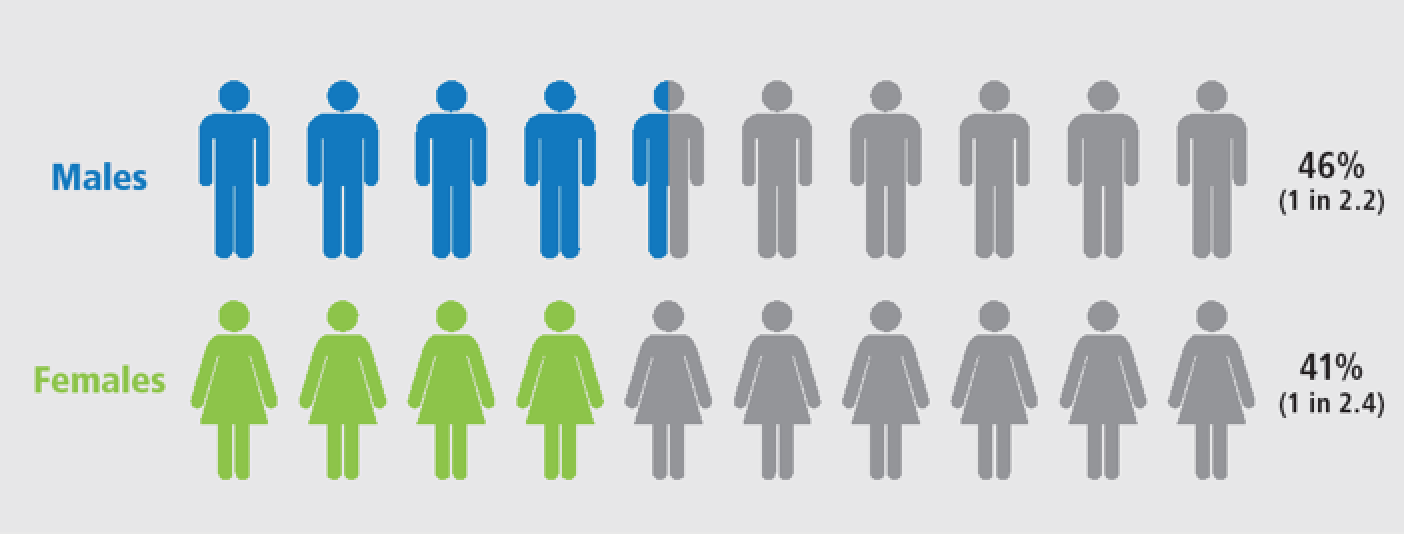National Best
Critical IllnessHow would your family or business cope with a key person who had a stroke, heart attack, caught cancer or contracted any of 22 other serious illnesses? How would you cover the cost of treatment and recovery? Critical Illness covers this risk.
Critical Illness Insurance provides a lump sum benefit should you ever become sick with a critical illness in your lifetime. The major illnesses covered are cancer, heart attack, and stroke but policies can include up to 20+ critical illnesses.
What are the chances of getting a critical illness in your lifetime?
If you live in Canada, your lifetime risk of cancer is 1 in 2.2 for men and 1 in 2.4 for women. One in 4 Canadians will die of the disease, which means 3 out of 4 survive.
. [1] Sources: Heart and Stroke Foundation,2004. National Cancer Institute of Canada: Canadian Cancer Statistics 2004. “Critical Illness Insurance: A Lump-Sum Review.” LIMRA’s Marketfacts Spring2002v 2013 Canadian Cancer Society (Combined Sources)
[1] Source: Canadian Cancer Society – Canadian Cancer Statistics 2018
According to the Heart and Stroke Foundation, your risk of having a heart attack in Canada during one’s lifetime is 1 in 5. Over 90% of heart attack patients admitted to hospital survive. The risk of stroke is 1 in 9. Approximately 80% of all Canadians who suffer a stroke will survive and be left with some form of disability.2
[2] Source: Heart and Stroke Foundation: 2014 Report on the Health of Canadians and 2017 Stroke Report.
When it comes to Critical Illness Insurance, a quick rule of thumb is to make sure you have enough to cover 6-12 months’ worth of income, the average length of time it takes to recover from a Critical Illness.
- At least 6-12 months’ worth of income
- Lump sum $10,000 to $1,000,000 +
- Policies can be paid up in as little as 20 years
- Return of Premium Options available
- Used any way you want (treatment, modifications to house, vacation)
- May include Second Opinion Service
- 62% suggested change in treatment
- 22% changed diagnosis
[1] Sources: Heart and Stroke Foundation,2004. National Cancer Institute of Canada: Canadian Cancer Statistics 2004. “Critical Illness Insurance: A Lump-Sum Review.” LIMRA’s Marketfacts Spring2002v 2013 Canadian Cancer Society (Combined Sources)
Dr. Marius Barnard
One of the most interesting facts in the history of critical illness insurance is that it was devised by a doctor, not by an insurance company. Dr. Marius Barnard, the brother of Christian Barnard the heart transplant pioneer, was the originator of critical illness insurance. He noted that many survivors of heart transplants survived quite well but they could not work during their recovery and many of them ran into financial difficulties. So Dr. Marius approached life insurance companies in South Africa and asked them if they could manufacture a product that could mitigate this risk. And that’s where critical illness insurance came from.
Almost half of all Canadians (41% of females and 46% of males) will develop cancer in their lifetime and a quarter of all Canadians are expected to die of the disease.(Canadian Cancer Society – Canadian Cancer Statistics 2013)
The Big Three
Over 70% of all critical illness claims come from the big three: cancer, stroke and heart attack. Many companies have coverage for only these illnesses. This helps to keep premium costs lower and cover the most common problems. Also, cancer is becoming by far the most common claim for critical illness coverage. And with modern treatments, patients are living longer and longer with even the most aggressive of cancers.
Return of Premium
One very interesting option with many critical illness providers is a return of premium. After a certain period of time or upon expiration of the policy (typically at age 75), the provider will return all of the clients’ premiums. So, in the end, the cost for the coverage has been minimal, only the lost opportunity cost of the money. However, if during that time-critical loans had occurred and in money had to be removed from a retirement fund such as an RRSP, then we can show how devastating that interruption in retirement planning can be.
Get In Touch
Head Office:
Unit#: 67B, 4511 Glenmore Trail SE,
Calgary, AB T3C 2R9
Phone: (403) 590-4500
Toll-Free: 1 800 503-6140
Fax: 1 877 904-7715


